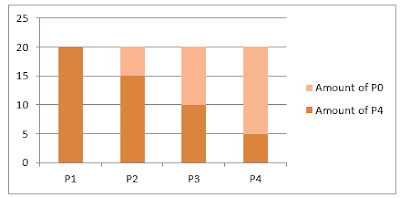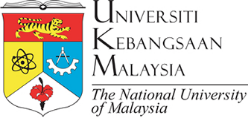Cosmeceutical Lab Report - lipstick
Introduction
Lipsticks
is a cosmetic product that exist in different types and colours. As with most
types of makeup, lipstick is typically worn by women. Some lipsticks are in the
form of lip balms, to add colour and provide hydration. Lipstick formulations
are most widely used to enhance the beauty of lips and to add glamour touch to
the makeup. Lipstick provide a convenient means of either freshening a makeup
by colouring or protection of lips from the effects of cold, dry weather, UV
light and wind.
Lipstick contains wax, oils, antioxidants and
emollients. Wax provides the structure to the solid lipstick. Lipsticks may be
made from several waxes such as beeswax, ozokerite and candelilla wax. Due to
its high melting point, Carnauba wax is a key ingredient in terms of
strengthening the lipstick. Various oils and fats are also used in lipsticks,
such as olive oil, mineral oil, cocoa butter, lanolin, and petrolatum.
In
the early period, lipsticks of limited colours were produced such as red. But now,
there are lipsticks of various colours such as pink, orange, violet and even
black. Some lipstick contain
something called "pearl essence".
This silvery substance can be found in fish scales. It is primarily sourced from herring and can be found
in many lipsticks, nail polishes and
other cosmetic products due to the shimmer effect it creates.
Objective
The objectives of this experiment are to ensure
that the students able to:
1.
Differentiate
the different function of the ingredient in each formula.
2.
Understand
the rational and function of the different type of formulation of the lipstick.
3.
Evaluate
the equality of the product.
Apparatus
1. Evaporating dish
2.
Water bath
3.
Electronic balance
4.
Weighing boat
5.
Glass rod
6.
Thermometer
7.
Measuring cylinder
Materials
1.
Castor oil
2.
D&C red
pigments
3.
Mica
pigments
4.
White
beeswax
5.
Cocoa
butter
6.
Vitamin E
acetate
7.
Vaseline
8.
Honey
9.
Paraben
(0.1% methyl paraben solution)
Methodology
1. There are four different lipstick
formulations prepared by varying amount of Phase A, the colour of the lipsticks.
2. Firstly, 15mL of Castor oil
was measured and put into evaporating dish on water bath. 0.5g of D&C red
pigments and 0.5g Mica pigments were then added accordingly. The mixture of
colour dispersion was stirred until homogenous. Temperature was checked
regularly to prevent overheating. (Phase A)
3.. Meanwhile, solid of 1.7g
White beeswax was melted on the water bath together with Vaseline. The mixture
was stirred until there was no presence of solid particle. Cocoa butter,
vitamin E acetate, honey and drops of paraben were added and the mixture was
continuously stirred. (Phase B&C).
4. Finally, the two mixtures were
removed from heat. Colour dispersion was added into the mixture of ingredients
and stirred gently until the final product was achieved.
5. The final product was then
poured into a mould and let cool before being sealed.
6. For the other three lipstick
preparations, some changes in the quantities of the ingredients were made:
Lipstick 2: 0.4g
D&C red pigment and 0.6g Mica pigments were used.
Lipstick
3: 0.3g
D&C red pigment and 0.7g Mica pigments were used.
Lipstick
4: 0.1g
D&C red pigment and 0.9g Mica pigments were used.
RESULT
Chart
of colour shading of all formulations
formulation 3
formulation 4
formulation 4
Formulation
1
Phase
A
|
Phase
B
|
Phase
C
|
15mL
Castor oil
|
1.7g
White beeswax
|
3
drops Paraben (0.1% methyl paraben solutions)
|
0.5g
D&C red pigment
|
1.0g
Cocoa butter
|
|
0.5g
Mica pigments
|
1.3ml
Vitamin E Acetate
|
|
0.5g
Vaseline
|
||
0.6ml
Honey (for taste)
|
Formulation
2
Phase
A
|
Phase
B
|
Phase
C
|
15mL
Castor oil
|
1.7g
White beeswax
|
3
drops Paraben (0.1% methyl paraben solutions)
|
0.4g
D&C red pigment
|
1.0g
Cocoa butter
|
|
0.6g
Mica pigments
|
1.3ml
Vitamin E Acetate
|
|
0.5g
Vaseline
|
||
0.6ml
Honey (for taste)
|
Formulation
3
Phase
A
|
Phase
B
|
Phase
C
|
15mL
Castor oil
|
1.7g
White beeswax
|
3
drops Paraben (0.1% methyl paraben solutions)
|
0.3g
D&C red pigment
|
1.0g
Cocoa butter
|
|
0.7g
Mica pigments
|
1.3ml
Vitamin E Acetate
|
|
0.5g
Vaseline
|
||
0.6ml
Honey (for taste)
|
Formulation
4
Phase
A
|
Phase
B
|
Phase
C
|
15mL
Castor oil
|
1.7g
White beeswax
|
3
drops Paraben (0.1% methyl paraben solutions)
|
0.1g
D&C red pigment
|
1.0g
Cocoa butter
|
|
0.9g
Mica pigments
|
1.3ml
Vitamin E Acetate
|
|
0.5g
Vaseline
|
||
0.6ml
Honey (for taste)
|
Evaluation
of lipsticks
1. Melting
point test
This test is done by
placing a small quantity of lipstick of the four lipstick formulation (1,2,3
and 4) into an evaporating dish. Then, the lipstick is then heated on a water
bath for even heating. The time taken at which the lipstick started to melt was
recorded.
Observation: The product
melts.
Tests
|
Formulation
1
|
Formulation
2
|
Formulation
3
|
Formulation
4
|
Melting
point test (time taken to melt at constant temperature of 600C) /
minutes
|
2
min 8 sec
|
2
min 2 sec
|
2
min 7 sec
|
2
min 7 sec
|
2. Stability
test
Condition (texture) of lipstick when
put under different temperature (°c)
LIPSTICK
FORMULATION
|
AT
4°C
|
AT
28°C
|
AT
40°C
|
1
|
Hardened
|
Soft
semi solid, normal
|
Starts to melt, become oily and
sticky
|
2
|
Hardened
|
Soft
semi solid, normal
|
Starts to melt, become oily and
sticky
|
3
|
Hardened
|
Soft
semi-solid, normal
|
Starts to melt, become oily and
sticky
|
4
|
Hardened
|
Soft
semi-solid, normal
|
Starts to melt, become oily and
sticky
|
DISCUSSION
In
this experiment, we prepared four different formulations and shades of
lipstick. Each formulation has three phases which are Phase A, Phase B and
Phase C. Phase A is the preparation of colour dispersion while Phase B is the
preparation of wax base which involves the blending of oils and Phase C
involves the adding few drops of methyl paraben solutions. Paraben is used as a
preservative is most cosmetic products to prevent bacterial growth.
For
this formulation, we have decided to not do any changes on phase B and C. This
is because any unsuitable alteration to them may lead to hardness or the
lipstick becomes too soft. We only varied the amount of ingredients in Phase A to
produce 4 different shade of lipstick.
To
ensure the lipsticks are of good quality, several tests were applied on the lipsticks
which are melting points test, and stability test at 4°C, 20-25°C and 30-40°C.
For the melting point test, we took half of the lipsticks from each container
and put into the porcelain glass and heat it at 60°C. The time taken when the
lipstick started to melt was recorded.
For
stability test, we recorded the observation after placing the lipsticks under
several conditions. At normal room temperature which is 20-25°C, all of our
lipsticks are in normal state. There were no changes on the lipsticks and the
colour remains the same. At 4°C, all our lipsticks were placed in a beaker
containing ice and the result was obtained where all the lipsticks remain
unchanged and harden with the appearance of water droplets. For the stability
of lipsticks at 30-40°C, the lipsticks were left under the hot sun. As the
result, all the lipsticks start to melt. They also became oily and sticky.
There
were also some errors we had done while preparing the lipstick formulations.
The first one, was, while conducting the preparation of all the lipstick
formulations and stability tests, parallax errors might be done, contributed to
the inaccuracy of the results. Besides, we could not fix the temperature of the
water bath. Therefore, it was difficult for us to constant the temperature at
60 ºC
These
are the ingredients that have been used in our lipstick formulations: castor
oil, D&C red pigments, Mica pigments, white beeswax, cocoa butter, Vitamin
E acetate, Vaseline, Honey which was used as flavouring, and Parabens. Each of
them has their own function to produce a good lipsticks product.
Ingredients
|
Functions
|
Castor
oil
|
|
Mica
pigments, D&C red pigments
|
|
White
beeswax
|
|
Cocoa
butter
|
|
Vitamin
E acetate
|
|
Vaseline
|
|
Parabens
|
|
CONCLUSION
At
the end of the practical, our group members have gained more knowledge on
lipstick preparation through this experiment. We were able to differentiate the
different functions of each ingredient in the formula and evaluate the quality
of our products.
In order to prepare the lipsticks, we have
performed the required procedures correctly to obtain a quality product. The
average time for the lipstick to melt at 60ºC was 2 minutes 1 second. The
lipsticks appeared to be in liquid form at 40ºC and above, stabled at room
temperature and hardened at 4ºC. Based on the chart of colour shading, we can
conclude that different amount of pigment gives different shade to the
lipstick.
REFERENCES
- Mishra,
P., &Dwivedi, S. 2012. Formulation and Evaluation of Lipstick
Containing Herbal Ingredients. Asian J. Med. Pharm. Res, 2(3),
58-60.
- Formulation
and Evaluation of Natural Lipstick from Coloured Pigments of Beta Vulgaris
Taproot. 2014. SwethaKruthika V*,
S Sai Ram, ShaikAzhar Ahmed, ShaikSadiq, Sraddha Deb Mallick, and T
RamyaSree.Journal of Pharmacy and Pharmaceutical Sciences.






Comments
Post a Comment